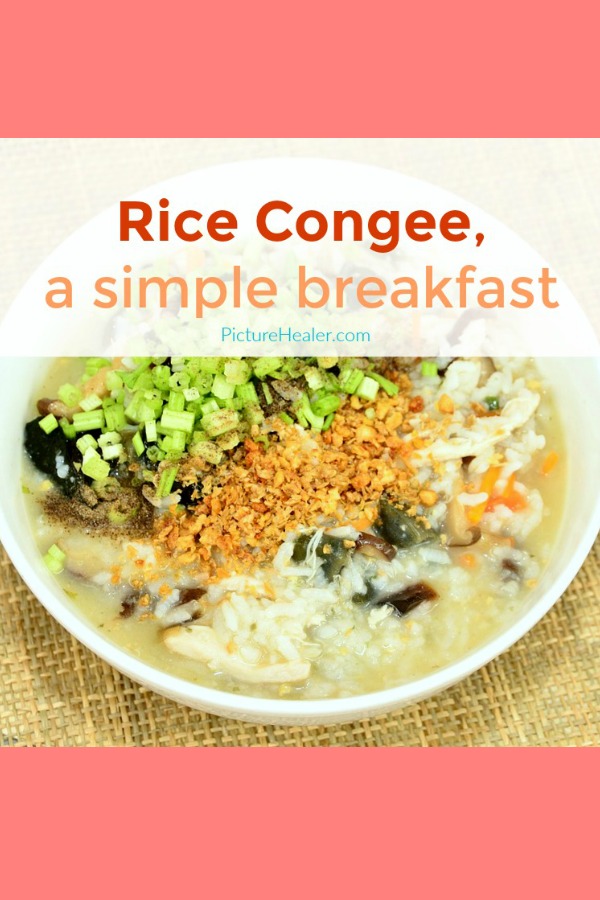Rice Congee, a simple breakfast
/By Chung Ching Wu
I was at IKEA the other morning with my wife and they happened to be serving breakfast at the time. I was quite amazed how much you got for the “Swedish American Breakfast” for $2.00. There were scrambled eggs, 2 turkey sausages, fried potato squares, and a couple of crepe-like pancakes with lingonberry sauce. She referred to it as “light, cheap, and healthy” (540 calories for breakfast is a nice change from IHOP).
While we were eating, we were talking about a “Chinese American Breakfast” and what that would consist of. A Chinese breakfast would have rice congee (Zhōu - 粥) with vegetables (bok choy, spinach, mustard greens), ginger, and a little bit of meat. My mother-in-law would add some scrambled egg into it as well, which was nice. I’m particularly fond of the mántou (steamed breadroll - 馒头), which you could buy on the street, with some stir-fried mustard greens and hot peppers she would make.
She then thought it would be a good idea if I wrote an article about congee for breakfast and add a recipe with modifications people could add to make it healthier. Maybe even write a little TCM information about it. I also thought it would be a good idea, so here are my thoughts about it.
Let’s talk about the base of the congee first, the rice. This rice is usually the leftovers from the day before, cooked again with water to porridge-like consistency. You can change the thickness of it by using less water when you cook. Some people like a thicker base with over-saturated rice grains. From there, you can add in whatever ingredients you’d like. Which is a good idea, as the congee alone is quite bland.
In TCM, nutrition is related to 5 Element Theory how it affects food. Certain foods have properties that can help certain conditions, much like we use the properties of herbs in formulas to treat illnesses. Some of these herbs ARE every day food, as mentioned in previous articles. Therefore food, in itself, is considered medicine and can help prevent ailments before they start.
Rice, in TCM (Traditional Chinese medicine), is related to the Lung in TCM. It helps to moisten and regulate water distribution to the body, such as the skin. As the Lung is paired with the Large Intestine in a Yīn Yáng relationship, it also helps with final nutrient and water re-absorption, as well as lubrication to help things move easier “out” of the body.
How to Cook Congee
Now, let’s talk about how congee is made. There’s a long way and an easy way. The long way is the more traditional method of how to cook congee. The easy way is the more modern take on it.
The long way: Traditional Stove top cooking.
What you’ll need
1 cup of rice (long grain)
5-10 cups of water (More water makes a thinner porridge. You’ll need to experiment to find your preference.)
1 – Rinse the rice until you no longer see a white tinge in the water. This is the “milk” of the rice. I usually cover the rice with water, shake it around a little, and drain it 3 times.
2 – Add the rice and water to a pot (preferably ceramic, but any pot will do), cover, and use high heat to bring to a boil.
3 – Once boiling, turn to low heat, uncover and stir. This is to make sure no rice is stuck to the bottom of the pot. If you don’t, it’s a pain to get off later and leaves a burnt taste to the congee.
4 – Cover again and simmer for 30 minutes, stirring occasionally.
5 – After 30 minutes, turn off the heat and let sit for 15 minutes. That will give the rice time to absorb more of the water and thicken the mixture.
The easy way: Using a rice cooker with a congee function.
What you’ll need
1 cup of rice
5-10 cups of water
1 – Add rice and water to the rice cooker, cover the rice with water with about 1/2 inch water standing on top of rice.
2 – Use the congee button.
3 – Wait until done.
Once complete, you can add meat, vegetables, and edible nuts/seeds. Just be sure to cook them separately (if needed) from the congee. It’s better to have a number of dishes on the table as single ingredients, just in case people would like to modify their congee dish to their liking. Also, you can substitute any type of broth for water to make a richer congee as well. Try to keep soy sauce or other flavored sauces to a minimum, as they raise the sodium content. They do help if the flavor is too bland though.
Here are some congee combination suggestions, just to give you a few ideas to see how flexible it can be.
The “Chinese American Breakfast Congee”:
Cook and add pieces of scrambled egg, bacon, and sausage.
The low-fat “Chinese American Breakfast Congee”:
Cook and add pieces of scrambled egg whites, turkey bacon, and turkey sausage.
Congee for digestion:
Cook and add spinach, sliced chicken, and ginger.
Omelet Congee:
Cook and add diced tomatoes, peppers, mushrooms, and a scrambled egg.
“Spring” Congee:
Cook and add scallion, sliced chicken, ginger, and bok choy.
“Summer” Congee:
Cook and add sliced pork, mint, and diced cucumbers.
“Winter” Congee:
Cook and add lamb, ginger, and mustard greens.
I hope you try some of these dishes and maybe even create a few of your own. These dishes aren’t just limited to breakfast, as you can put them into plastic containers and re-heat when you’re at work. It makes a very cost effective meal when you can’t get to IKEA!







What should we eat in the fall season to fight against dryness, allergy, cold and flu?